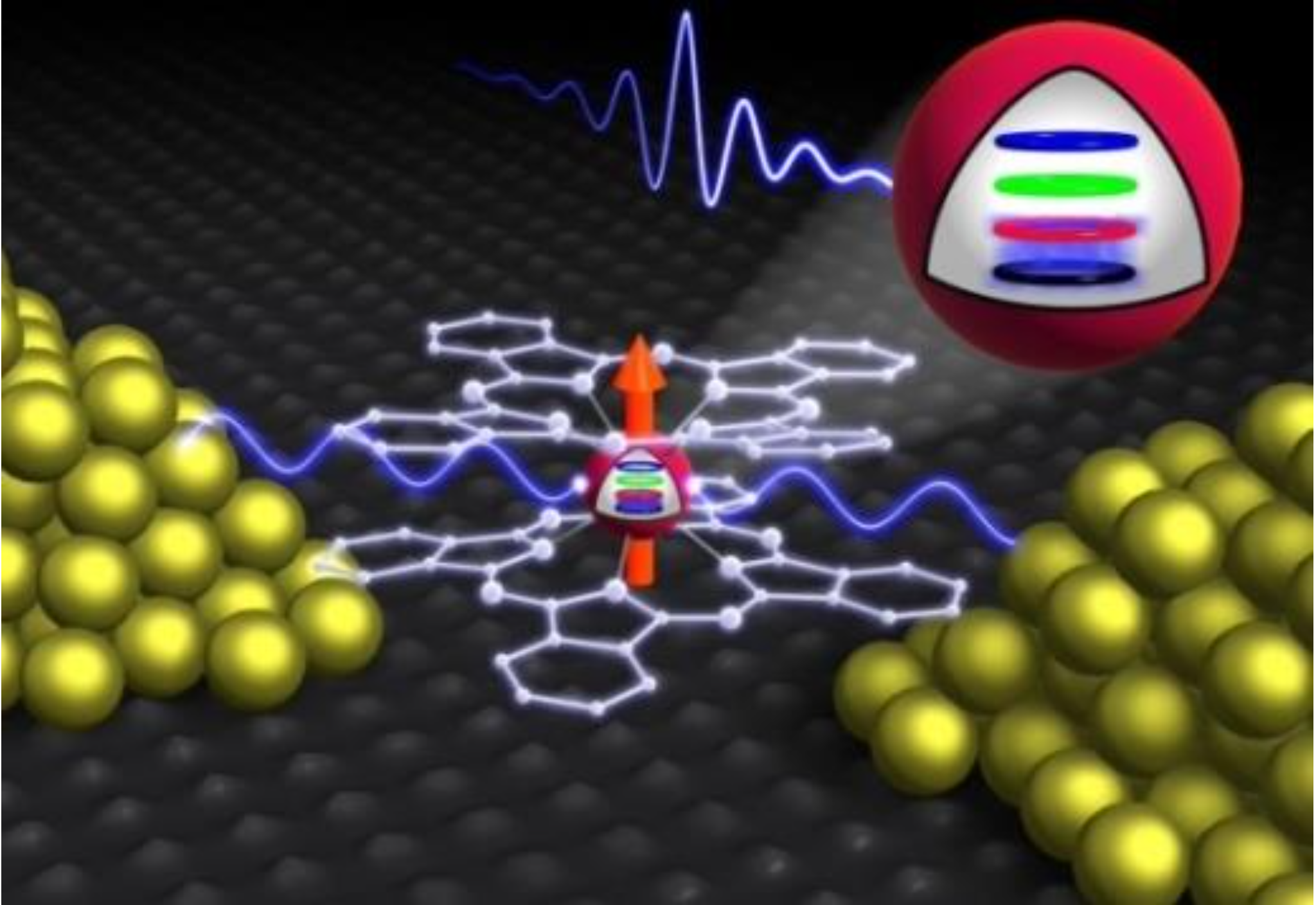Metal complexes will be proposed to acting as active quantum units for Quantum Computing (QC). We report on the implementation of metal complexes into nanometre-sized (single-)molecular spintronic devices by a combination of bottom-up self-assembly and top-down lithography techniques. The controlled generation of magnetic molecular nanostructures on conducting surfaces/electrodes will be shown and persistence of their magnetic properties under confinement in Supramolecular Quantum Devices (SMQD) will be proven. The quantum behaviour (e.g.. superposition, entanglement) of the metal complexes will be addressed at the single molecule level$^{1-13}$ to finally implement a quantum algorithm on a TbPc$_2$ Qudit performing quantum computing operations.$^{10}$

References:
[1] S. Kyatskaya et. al. J. Am. Chem. Soc. 2009, 131, 15143-15151.
[2] M. Urdampilleta et al. Nature Mater. 2011, 10, 502-506.
[3] J. Schwöbel et. al. Nature Comms. 2012, 3, 953-956.
[4] R. Vincent et al. Nature 2012, 488, 357-360.
[5] M. Ganzhorn et al. Nature Nano. 2013, 8, 165–169.
[6] M. Ruben et. al. Nature Nano. 2013, 8, 377–389.
[7] S. Wagner et. al. Nature Nano. 2013, 8, 575–579.
[8] S. Thiele, et al. Science 2014, 344, 1135-1138.
[9] M. Ganzhorn, et. al. Nature Comms 2016, 7, 11443.
[10] C. Godfrin et al. PRL 2017, 119, 187702 (perspective article by A. Morello Nature Nano 2018, 13, 9-10).
[11] H. Biard et. al. Nature Comms 2021, 12, 4443.
[12] S. Kuppusamy et. al. Nature Comms 2021, 12, 2152.
[13] D. Serrano et al. Nature 2022, 603, 241.
Recent Reviews:
"Molecular Spin Qudits for Quantum Algorithms."
E. Moreno-Pineda, C. Godfrin, F. Balestro, W. Wernsdorfer, M. Ruben. Chem. Soc. Rev. 2018, 47, 501.
„Synthetic Engineering of the Hilbert Space of Molecular Qudits: Isotopoloque Chemistry.“ W. Wernsdorfer, M. Ruben. Adv. Mat. 2019, 31, 1806687.